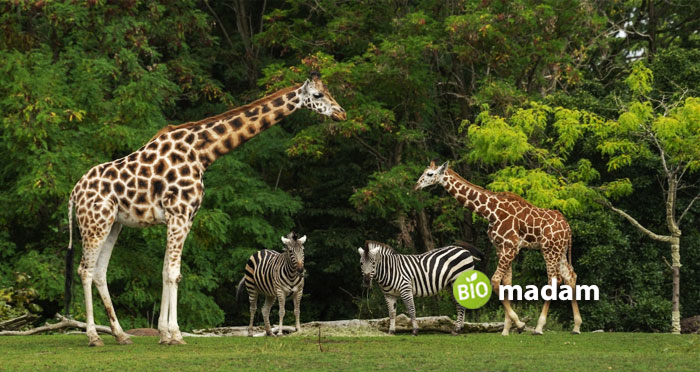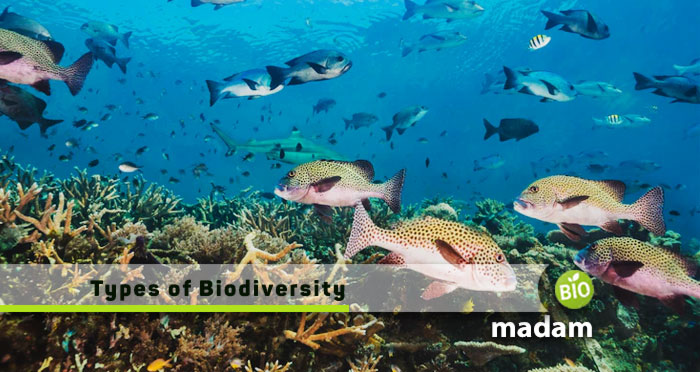Biodiversity is essential to the study of biomes and ecosystems around us. It allows us to understand the different types of organisms in a region and study their relationship with each other. Biodiversity includes all kinds of organisms on Earth, including animals, fungi, plants, algae, microorganisms, etc.
Let’s tell you everything you need to know about biodiversity.
What is Biodiversity?
Biological diversity, commonly known as biodiversity, comes from the Greek word Biosdiversitas. ‘Bios’ means life, whereas ‘diversitas’ means variety. Thus, the world literally translates to the diversity of life.
Biodiversity is the diversification of life on the planet at different degrees, such as habitats, ecosystems, cultural processes, genes, and types of ecology.
It includes all biological aspects of life found on Earth, such as plants, animals, fungi, bacteria, viruses, etc. These all-biological elements of life define the natural world.
So, what is the role of biodiversity in our ecosystem and community?
Biological diversity helps to fulfill the basic needs of living things, such as fuel, shelter, food, water, etc. It also includes the role of humans with relation to environmental factors. Thus, human culture, called bioculture, is also a part of biodiversity.
Types of Biodiversity
Biodiversity comprises all organisms around us. So, it is important to remember that all organisms differ from each other at different organizational levels. Biodiversity is widely categorized into three types.
Here are the types of biodiversity:
Genetic Diversity
Genetic diversity refers to the diversification among different genetics in an organism. Every organism or species is unique to the others in genetic diversity. It also refers to the difference in genotypes and phenotypes to give each organism their particular characteristics. Every human being looks different from one another because the genetic material in their nucleus carries specific traits.
Every individual has a variety of genes and alleles suitable for their particular environment. Individuals with different alleles in an environment are more likely to survive towards yielding offspring. This survival will result in an increment in the lifespan of those individuals. Organisms living in faraway regions have the most significant number of differences.
Apart from humans and animals, there is also a diversification of genetics in crops such as wheat, barley, rice, seeds, grains, etc. The study of genetics in populations provides various theories about diversity in genetics in plants and other organisms.
Species Diversity
Species diversity means the diversification of different types of species in a habitat or ecosystem. This type of diversity is at the initial level of biodiversity after genetic level. It signifies the number and distribution of species in a particular area that vary according to environmental factors. Species diversification ranges from animals, plants, fungi, and molds, to microorganisms. The species in a region are needed to have the same mean proportional species.
The diversity in species from different genera consists of three components: richness, species taxonomic, and species consistency. The richness component is used as a count for species. In contrast, species taxonomy and consistency refer to the genetic relationship between different species groups. However, species consistency describes equality related to the abundance of species.

Ecosystem Diversity
Ecosystem diversity refers to the diversification and interaction of living and nonliving organisms with each other and the surroundings in different types of ecosystems. It is the ecological diversification of species like plants and animals connected with food chains and food webs.
Examples of ecosystem diversity include rainforests, deserts, mangroves, etc. In simple words, it comprises the study of the variety of species population observed in a region’s ecosystem. This type of biodiversity is monitored on a regional basis in various ecosystems. Biodiversity primarily contributes to the working of the ecosystem and human well-being.
Megadiversity
Megadiversity is a modern approach to understanding biodiversity around us. It refers to the highest level of the number of groups based on genetics and the functioning of individuals. This study of the richness of biodiversity is performed in different areas to collect relevant data.
Megadiversity is used for the most bio-diverse nations. There are about 17 countries in the world that are rich in biodiversity. Australia, Columbia, Philippines, Ecuador, Brazil, Mexico, and Malaysia are among the countries with widespread species of animals, plants, fungi, and other organisms. Such countries are known for megadiversity due to their awareness of biodiversity.
The concept of megadiversity is based on four different ideas, including:
- The biodiversity of each country is vital for the sustenance of that country.
- Biodiversity is not distributed equally on Earth.
- Some nations have ecosystems but are undergoing severe threats.
- It is necessary to focus on conservation efforts to get the maximum effect from limited resources.
Importance of Biodiversity
The knowledge and existence of biodiversity are fundamental in an ecosystem. Biodiversity is essential for many reasons, such as intrinsic and practical points of view. Understanding these two points of view describes what biodiversity gives to humans and what rights it has.
Besides that, biodiversity offers natural elements like climate regulation, pollination, fertilization of plants, seed dispersal, and agriculture or water purification control. Thus, it allows hundreds of different species and subspecies to provide us with food. Plants act as producers in the food web by producing food through photosynthesis.
Higher biodiversity rates are also related to improvements in human health. If you wonder why; it is because plants are essential to extract molecules and compounds for medicines. In all, biodiversity makes Earth livable. All organisms get food from plants acting as the main source of nutrients.
Biodiversity also contributes to the economy by providing livelihood opportunities to people. Opting for nature-positive businesses can help offer cost-effective options and nature-friendly infrastructure.
Threats to Biodiversity
Since the last decade, human beings have been trying to dominate the world by fighting against biodiversity. While they succeeded in many cases, such as cutting plants, killing animals, creating pollution, wasting resources, etc., this all has badly affected the environment and the ecosystem. This period is called the ‘Anthropocene,’ the geological age. Due to these factors, the Earth is changing rapidly with time, resulting in species extinction and disaster changes in the weather and climate. It may damage the population of plants, animals, fungi, and algae in the environment.
The biggest threats to biodiversity are pollution, climate change, loss of habitats, deprivation of resources, and invasion of species with harmful effects. Apart from that, another non-highlighted threat to biodiversity is the rapid growth in the human population and the high consumption rate of resources. This threat might not seem like a big problem, but this can be the most significant issue for plants in the upcoming time. A lesser amount of plants will not be able to provide nutrients to herbivores. Thus, disturbing the whole food web.
Although there are many threats to biodiversity, human beings have the power and ability to overcome the dangers and can make the world a better place. A proper understanding is necessary to fight this threat.

Consequences of Biodiversity
Many proofs describe the decline of prokaryotic and eukaryotic cell biodiversity in recent times. The decline will affect the growth and stability of the ecosystem.
Different experiments have been conducted to understand the consequences and influence of biodiversity if it gets into a decline position. These experiments were performed by manipulating the components of biodiversity, such as measuring different types of ecosystems and species. All these experiments were performed in labs, freshwater ecosystems, forests, marine, and grassland.
These experiments showed that the function of the ecosystem depends on the richness of species, the richness of functional groups, and the composition of species. It also proves that contemporary changes in biodiversity will lead to subsequent changes in an ecosystem. Lastly, studies at large proportions can help us to get a better understanding of the consequences of biodiversity.
The Bottom Line
Biodiversity is essential to humankind and involves all types of organisms and microorganisms. Thus, fungi, mold, animals, plants, and algae contribute to biodiversity. Biodiversity enables us to determine the type of organisms in an environment and their survival needs. The ecosystem provides all the macro and micronutrients to the species involved in biodiversity, through natural resources. Biology, biochemistry, and molecular biology, and their impact on humans can help understand biodiversity better. Ignoring the perseverance of biodiversity can lead to serious consequences.
FAQs
What are 4 examples of biodiversity?
All types of organisms around us make up biodiversity. Pine trees, reindeer, centipedes, millipedes, and microscopic bacteria are biodiversity examples.
What are the 3 types of conservation?
Environmental, animal, and marine conservation are three types of conservation needed to keep the ecosystem healthy.
Which is the largest scale of biodiversity?
Ecological biodiversity is the largest scale of biodiversity that includes different types of ecologies. It includes various plants, animals, fungi, algae, and microorganisms niches residing in different habitats, including terrestrial and aquatic.

Jeannie has achieved her Master’s degree in science and technology and is further pursuing a Ph.D. She desires to provide you the validated knowledge about science, technology, and the environment through writing articles.

